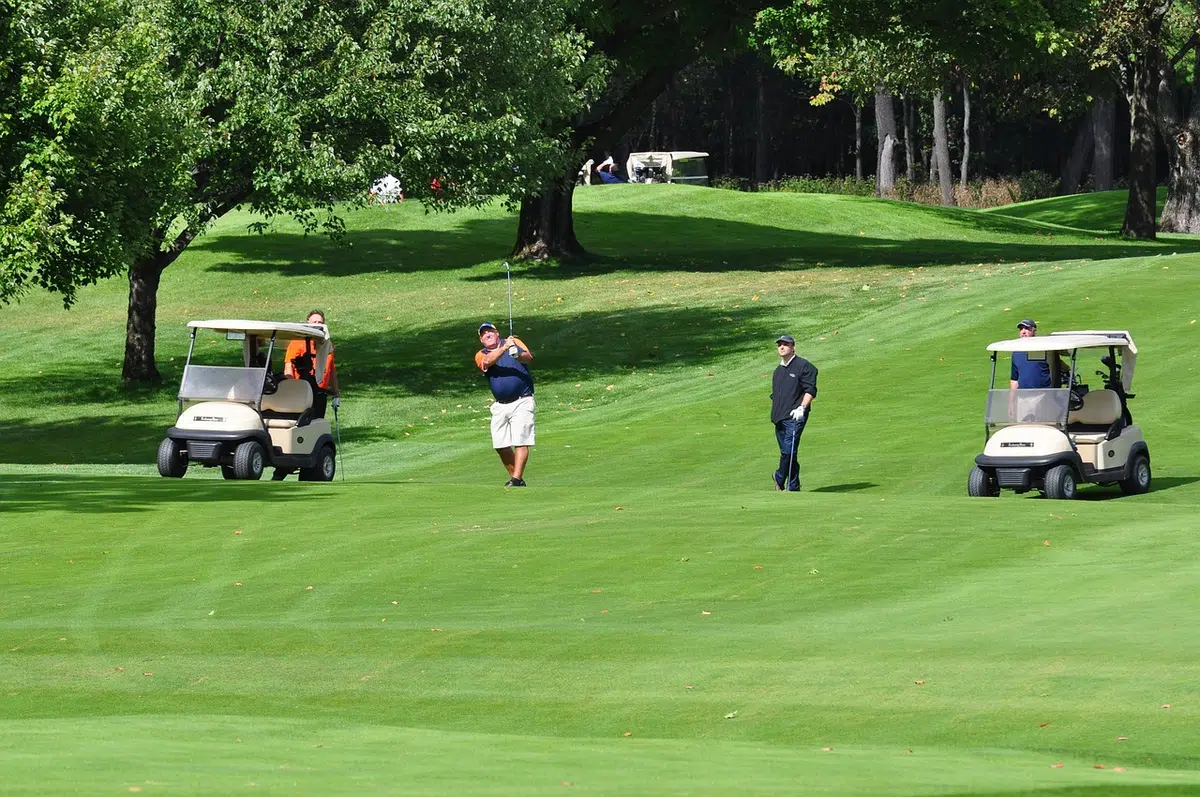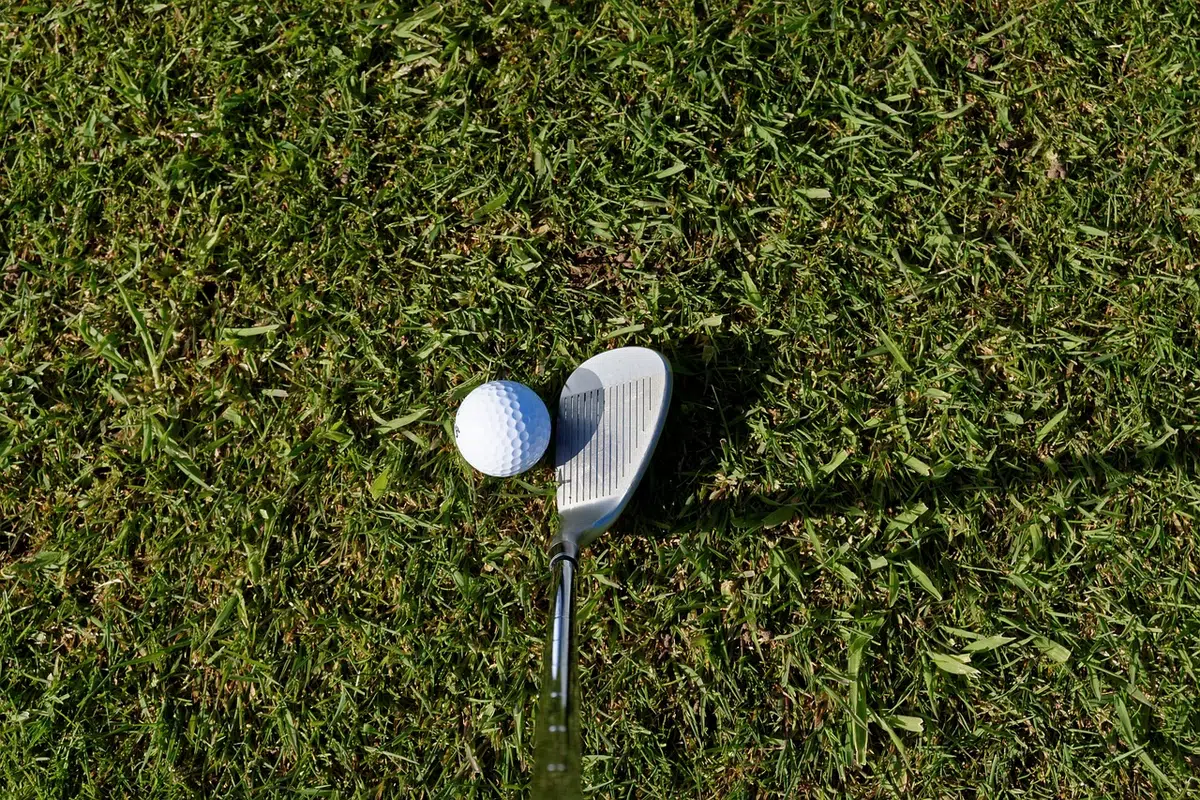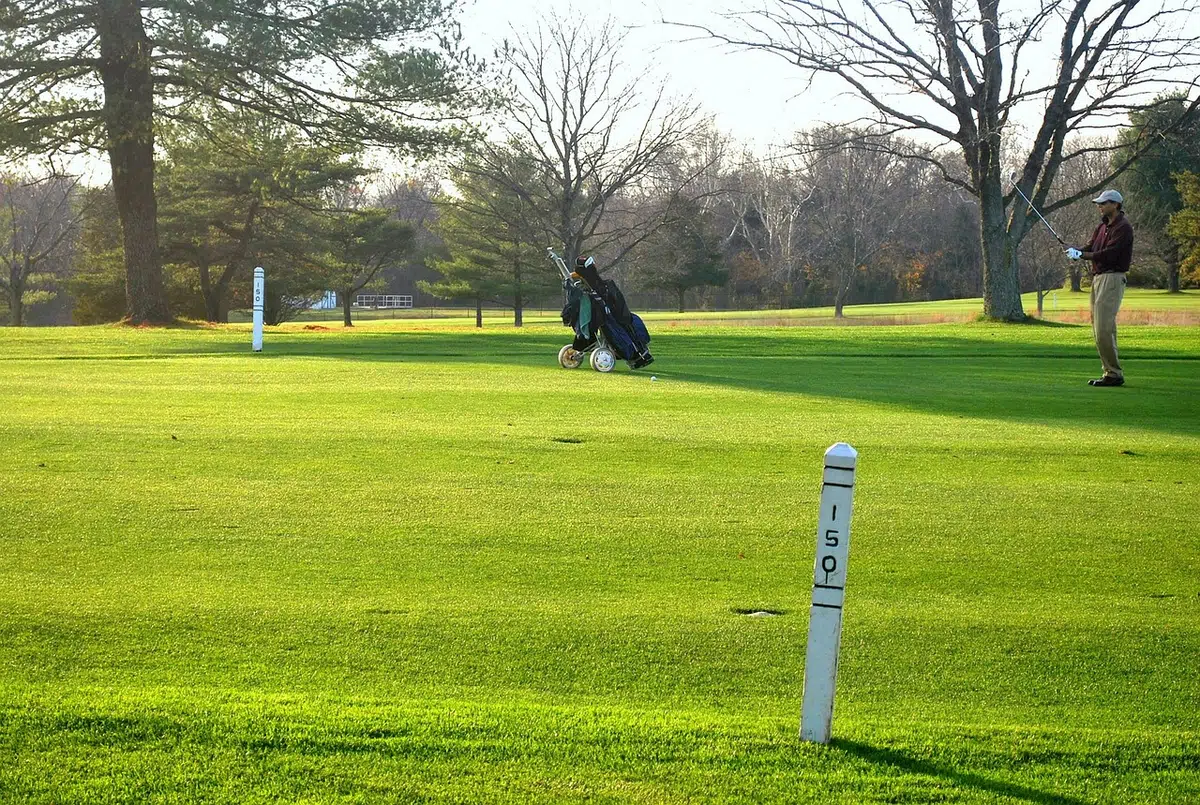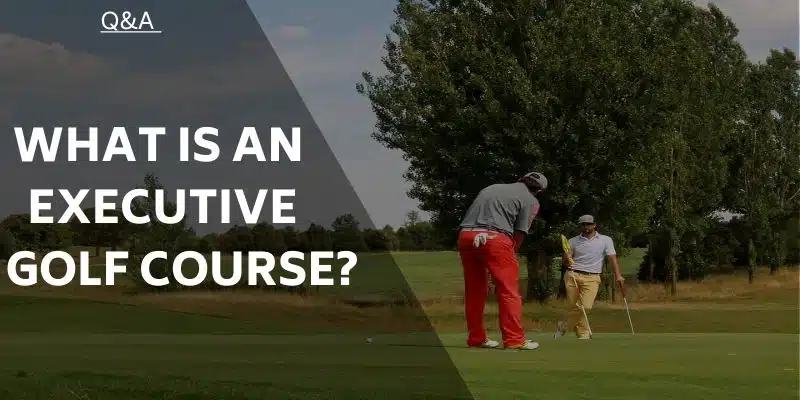Wedge bounce is an essential consideration for any golfer looking to improve their game. The concept can actually be quite confusing, so in this article, we aim to demystify the jargon. So, what is wedge bounce?
Golf wedge bounce is the angle measured from the sole’s trailing edge to the club head’s leading edge. Depending on how deep your divots tend to be, the edge of the club will travel either on top of or through the turf before impact with the ball.
Ignoring wedge bounce can be seriously detrimental to your short game.
Selecting the correct bounce will stop your club from consistently digging into the ground and duffing chip shots. You could be playing with a wedge with a bounce level that is poorly suited to your ability or the types of courses you play.
It’s actually a simple fix, but first, we must understand some basics.
Understanding Wedge Bounce Basics

As a general rule: the more effort you put into selecting your wedges, the better they will perform on the course.
To do this, we need to go on a bit of a journey.
First, we must understand how wedge bounce affects our shots. Then we will run through what wedges are on the market. After, we can then get a picture of the different bounce options available. Finally, we should consider the types of grinds.
Cool?
Let’s get started.
How Wedge Bounce Affects Your Shots
Wedge bounce is measured in degrees and helps to determine how your club will react to different surfaces. Opting for a larger bounce will help you avoid fat shots, as too little bounce can dig into the ground and deflect ball contact high off the face.
For example, if you are playing from softer turf, a higher degree of bounce would be recommended, as more resistance is created between the club and the surface.
Conversely, a lower degree of wedge bounce should be considered when playing from firmer terrains.
Failing to choose an appropriate bounce level can create striking issues like thinning it or catching an overly long shot due to excessive grounding at impact. This will become clearer when we look at the types of bounce.
Types of Wedges
There are four types of wedges. As a beginner, a gap wedge might be optional for your bag. However, having four wedges in your arsenal could prove beneficial if you are an intermediate golfer or have a particularly strong short game.
- If you are around 120 yards out, reach for your Pitching Wedge (PW).
- When just over a hundred yards away, approach the green with your Gap Wedge (GW). This club is designed to fill the gap in distance between the PW and SW. The margins for error are smaller when approaching the green. You can learn more about the differences between a gap wedge and approach wedge in our article.
- Should you find yourself in a bunkering situation or even closer to the flagstick than 100 yards away, take out your Sand Wedge (SW).
- When needing high trajectory shots like chipping over sand traps or flop shots: the Lob Wedge (LW) will be your preferred option.
Types of Bounce

So, what does bounce mean on a wedge?
There are three types of bounce: high, mid, and low.
The easiest starting point is to visualize the club hitting the ground just in front of the ball. The below wedge bounce chart shows how a leading edge with different angles might affect ball trajectory.
Low bounce: Wedges with 4 – 6° of bounce should be used on hard surfaces, as they will skip off the ground without issue. If your approach to golfing focuses on clean contact and you produce shallow angle shots that don’t lead to huge divots, this type of wedge is ideal for you. These wedges are designed to maximize friction between the club head and the turf beneath it.
Mid bounce: Wedges with 7-12° of bounce. This is your best option if you want the most versatile playability regardless of conditions or swing types.
High bounce: If you’re a golfer that typically takes deep divots or plays on soft soil, then high bounce wedges with over 12° of bounce will prevent the club from digging too profoundly into the turf.
Types of Grinds

A wedge’s grind refers to the amount of material removed from the club’s sole.
Depending on your shot preference, the type of grind on a wedge influences the contact it makes with the turf.
Before worrying about wedge grinds, ask yourself a few simple questions.
The first concerns conditions. What kind of terrain and turf are you playing on? Are the grounds tight and firm or more rustic?
Secondly, consider the effect your club has on the turf. If you take a large divot with every swing, you will likely need a wider sole. This is unnecessary if you strike the ball without leaving marks in its wake.
Answering these two questions will help you determine what is right for you.
If you play on bushier grass and take a reasonable divot, then a standard grind with minimal material removed from heel and toe is probably the right choice. If you play flatter fairways, perhaps something more aggressive that allows your club to sit flatly on a tight lie may work better.
So which grind do you pick?
Well, here is where grinds can get slightly confusing. Each manufacturer uses their own labels (or letters) to represent different grinds. If you are set on a particular brand, then it is worth looking into their options.
With this said, Bob Vokey is widely considered to be the Godfather of wedges. Vokey wedges (Titleist) can be broken down into the below categories:
| Vokey Wedge Grind | Description |
| T Grind | The T-Grind is an ideal wedge for golfers of any skill level. Its low bounce makes it versatile in any condition – firm courses, bunkers with shallow sand, or even links conditions. |
| F Grind | The F-Grind wedge features a full sole with no grinding. It has camber and radius angles that help take advantage of all types of distances. The F-Grind remains popular among PGA Tour and LPGA Tour players due to its versatility. |
| S Grind | The S grind wedges provide a balanced bounce and make the perfect choice when playing neutral shots near the green. |
| M Grind | Perfect for medium-firm conditions yet can easily handle softer surfaces, too, making it ideal for sliders who need extra spin control. |
| K Grind | The most forgiving bounce option, making it ideal for mid-high handicappers. |
| L Grind | With the lowest bounce available, the L grind allows players to easily open up the face of their clubs and hit a wide variety of shots from any firm surface. |
| D Grind | The newest addition to the Vokey family, the D grind is an optimal option for golfers playing on soft courses due to its high bounce angle. |
Types of Lofts
Golfers usually carry between two to four wedges in their bag, contingent on their skill level. As a base, most golfers will carry sand, pitching, and lob wedges. Some will also carry a gap wedge to minimize the distance between wedges.
Each wedge has a typical range of loft. The higher the loft– the more spin and control, but less distance.
These average ranges are summarized in the table below.
| Club | Short Name | Loft (º) |
| Pitching Wedge | PW | 44 – 48 |
| Gap/Approach Wedge | GW/AW | 50 – 52 |
| Sand Wedge | SW | 54 – 58 |
| Lob Wedge | LW | 58 – 64 |
There are a lot of different wedges on the market that offer different benefits. For example, we think the Cleveland CBX2 is currently the best wedge for women.
How To Choose the Right Wedge Bounce for Your Swing
The first point to consider when selecting bounce on wedges is the type of course you play most regularly. This tends to be governed by your local climate. Whether your fairways are soft or hard should be the biggest factor in your decision. Ultimately, you want your wedge to interact well with the turf.
The general rule is that:
- Firmer conditions need less bounce.
- Softer conditions require more bounce.
Low bounce wedges will helpfully skip off the hard ground. High bounce wedges stop you from digging too deeply into the turf in softer conditions.
The second consideration is your attack angle. If you have a lot of wrist hinge and attack steeply then you’ll want a higher bounce to stop you from digging into the ground. A lower bounce is for you if you have more of a shallow swing and little wrist movement.
So, as an example, if you tend to take divots and play on soft turf, a low bounce club will likely dig far too deep into the turf.
At the end of the day, we are playing to make crisp ball contact and not to invade the homes of indigenous moles and worms.
For example, a high bounce sand wedge might be better suited in this situation.
Tips to Maximize the Benefits of Wedge Bounce

Using wedge bounce to your advantage starts with understanding the different types of bounce available, as we have outlined above. A wedge with bounce optimized to suit your swing and regular playing conditions will allow you to maximize spin and control with your approach shots. Here are three practical steps to further enhance your wedge play.
1. Understanding the different grinds – Knowing the difference between different grinds can help you further dial down your accuracy. Once you have bracketed yourself as needing low, medium, or high bounce you can optimize further by selecting the right grind.
2. Practice with different bounce options– As your game progresses, it’s important to practice with different bounce options to find out if they still work for you as you get better. This also helps you get comfortable hitting different types of approach shots around the green.
Read more: 58-Degree Wedge Distance
Common Misconceptions about Wedge Bounce
The moral of the story (as it always is in golf) is that general advice does not always apply to all golfers. Generally, those with steep attack angles need more bounce on golf wedges. With that said, golfers may naturally adjust their swing in different conditions, meaning the bounce’s benefit is offset.
Some advice you read online will tell you there is a ‘superior’ bounce and grind combination that will unequivocally improve your game. Sadly, as much as a simple answer to finding the right bounce is the most desirable, things are often more nuanced.
Every golf swing is different. You will need a professional club fitting to understand the bounce and grind that suits your game best. Hitting one-hundred shots in a simulator that tracks your angle of attack, smash factor, and contact point will give you a definitive answer.
With this said, even by asking, “what is the bounce on a wedge?” you are giving yourself an advantage over your peers. Understanding the concepts is great, so you incorporate them into your thinking when you’re on the course.
A Simple Drill to Improve Your Wedge Bounce

If you’re prone to topping the ball or taking too much turf, this simple drill will help enormously.
- First, remove the ball.
- Try to skim the surface on repeat (and repeat) until you are effortlessly brushing the turf.
- When the ball goes back down, the cleaner contact point will make the most of the type of bounce and grind you use.
FAQ
What Bounce Is Best for Wedges?
The optimal wedges for most golfers in most conditions are mid-bounce wedges with an angle of 7 to 12 degrees.
Is 12 Degrees of Bounce Too Much?
Clubs with more than 12 degrees in bounce are considered high bounce and suited to golfers that play soft conditions that usually take divots. Some golfers will find 12 degrees too much for firm conditions.
What Is a Normal Bounce for a Wedge?
Mid-bounce wedges, also called the “medium” or “standard bounce,” usually offer a range of 7-12 degrees of bounce and can be played on either firm or regular turf conditions.
What Bounce Are Tiger Woods Wedges?
Tiger uses TaylorMade Milled Grind 3 (MG3) wedges in 56 and 60 degrees loft. The 56 degrees has 12 degrees of wedge bounce, while the 60 degrees has 11 degrees bounce.
Final Thoughts
The main wedge manufacturers like Titleist, PING, and Callaway all offer different variations of wedge bounce.
Being mindful of turf conditions and your swing tendencies will take you further than the average golfer. If you’re looking for areas to shave down your handicap, a professional fitting to dial into the optimal wedge bounce for your game could be beneficial!
Sam has been playing golf for over 20 years and founded Impact Golfer. As a teenager, he discovered his love for the game using his grandad’s clubs, including a wooden driver. As a golf obsessive, Sam plays whenever possible, regularly competing in matchplay with his friends and in tournaments at his local club. He's fortunate to have a close friend who is a club pro– he has tested almost every type of equipment on the market (no freebies yet).
Sam has a handicap index of 13 and likes playing at the Metro Golf Centre near his home in London. He putts with a Taylormade Spider because Rory uses it but regrets selling an old Scotty Cameron putter on eBay.
- Best score: 94
- Favorite club: TaylorMade Stealth Driver
- Favorite putter: Bought a TaylorMade Spider because Rory uses it, but spend most of my time on greens yearning for the Scotty Cameron I sold on eBay.
- Favorite food at the turn: Baguette. Sausages. Bacon. HP Sauce.







